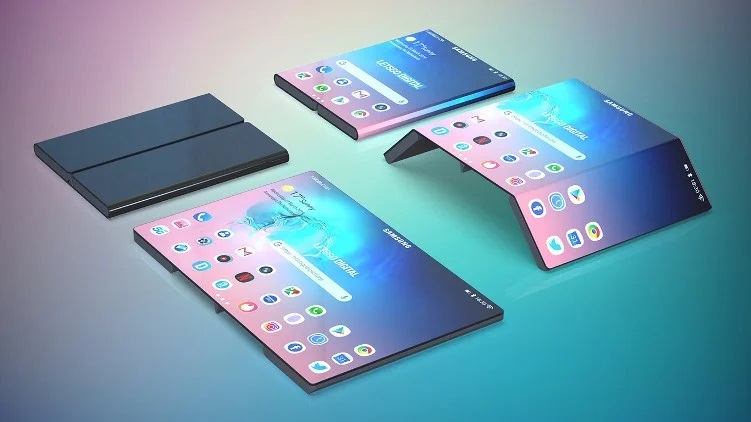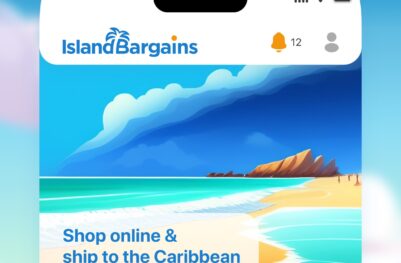- Developers
- Developer Blog
- Mobile App Development
- How to Build an App for a Folding Phone?

profile

By Faiza Khalid
Verified Expert
5 years of experience
Faiza is a CIS engineer with a keen interest in software development, AI research, and technology writing.
Are you interested in developing an app for a folding phone?
The size of the foldable display market by applications such as smartphones and tablets is expected to grow at a CAGR of more than 75% from 2019 to 2025.
Advanced development in OLED display technology is one of the main drivers of the foldable display market. Increased customer awareness of the latest technology and innovative features accompanying foldable phones drive their sales.
Developing an app for a folding phone requires a deep understanding of the foldable technology, libraries, and features besides mobile app development frameworks and tools, database technologies, application testing, etc.
If you don’t have a professional team with this relevant expertise to take on the task, then submit a request for a complimentary discovery call, and one of our tech account managers who managed similar projects will contact you shortly.
Let’s now discuss the steps to build an app for foldable devices.
Develop an App for a Foldable Phone
Take the following steps:
1. Perform market research and finalize app features
Start by studying the current foldable technology landscape, including leading devices, manufacturers, latest trends, existing apps, etc. Identify your target audience and their favorite apps’ features; are they early adopters of foldable smartphones, business professionals, or some other demographic?
You can conduct surveys to understand your end users better in terms of their pain points and requirements. Consult industry reports on foldable phone adoption, desired apps of users, and current market dynamics.

Get a complimentary discovery call and a free ballpark estimate for your project
Trusted by 100x of startups and companies like
Decide on the features to include in your app based on all the research you have done. The market analysis reinforces your objective of developing an app for foldable smartphones, like why you need to build it and how the features are relevant to your target market.
For example, if you wish to develop a gaming app, a folding phone gives a better immersive view.
Similarly, if you plan to target the Ed-Tech market, a multi-window view of a foldable phone allows students to go through reference sites, listen to lectures, and write notes without switching to different tabs or screens.
Features for foldable apps
Some foldable tech-related features you can include in your app for foldable devices include the following:
Multi-screen support
- Use both screens when the foldable device fully unfolds.
- Allow users to interact with the content on one screen while supplementary information or controls display on the other.
Adaptive layouts
- Responsive layouts that adjust to different screen dimensions ensure a consistent and visually appealing app design on both folded and unfolded screens.
Multi-window mode
- Allow users to open multiple instances of your app simultaneously in multiple windows. For example, for a calendar app, users should be able to view the calendar on one window, a to-do list on another, etc.
- Users should be able to use your app besides other apps in a split-screen mode. This improves users’ productivity and allows them to multitask.
Flexible navigation
- Flexible navigation patterns adapt dynamically to different screen dimensions and configurations. These include navigation bars, menus, etc.
Hinge awareness
- Hinge-aware features dynamically adjust content placement and layouts according to the hinge in the middle of a foldable screen.
Enhanced visual experiences
- Take advantage of bigger screens and offer augmented media experiences. For example, provide panoramic or AR-enhanced modes for streaming videos or immersive gaming experiences.
App continuity
- Ensure your app transitions smoothly without any interruptions between different screen orientations.
Gesture support
- Make it easier for users to interact with your app via built-in support for gestures, such as tap-and-hold, pinch-to-zoom, swipe, etc.
Customizable views
- Allow app users to personalize their views and layouts according to their preferences. For instance, a video streaming app user might want a side menu in an unfolded screen state but want a clear view in the unfolded mode for better visibility.
Collaborative features
- Enable users to share content between both screens or multiple windows. Drag and drop features allow the easy content transfer by dragging and dropping across the foldable display.
Task continuity
- Preserve the progress and data of users when they switch between folded and unfolded screens.
Include these features, besides other business features and non-functional requirements, in your project plan and product backlog. The development team uses this product backlog as a guide to build your application for foldable mobile phones.
2. Form an app development team
You require a professional and knowledgeable team to develop your app for foldable mobile phones. We suggest you hire for the following roles:
- A UI/UX designer;
- A front-end developer;
- A back-end developer;
- A cloud engineer;
- A DevOps engineer;
- An app tester;
- A business analyst;
- A project manager.
All your app designers and developers should have skills and experience related to developing apps for foldable devices. We discuss these technical skills to develop an app for a folding phone in more detail below.
3. Choose an app development methodology
You have finalized your app features and put together a competent team. You now choose an app development methodology that your project team will follow.
The development methodology ensures the following and more:
- Your project is well-planned and organized;
- Your team has a clear understanding of their roles;
- There is a proper risk management strategy in place,
- Your stakeholders’ expectations regarding deadlines and deliverables are set and met realistically.
Agile methodology is popular for software development projects as it supports iterative and customer-focused development.
Developers commonly adopt agile frameworks, like Scrum, for developing mobile apps. Scrum development offers the following benefits:
- Flexibility and adaptability: A scrum team adapts quickly to rapidly changing requirements, like user needs, market trends, development technologies, etc.
- Rapid prototyping: Businesses can quickly develop minimum viable products (MVPs), release them in the target market, and gather user feedback on their product idea.
- Frequent releases: Scrum iterative development allows frequent incremental releases and updates to resolve bugs, introduce new features, and improve user experience.
- Customer-centric products: Developers prioritize user feedback. After every deliverable release, users give feedback, which developers incorporate into subsequent development iterations.
- Cross-functional teams: Scrum teams consist of developers, designers, testers, and other specialists if required. Small cross-functional teams work closely to offer better app design, performance, and usability.
- Communication: Scrum emphasizes open communication and transparency within the project team. There are daily standups and weekly sprint meetings to discuss project deliverables, including hurdles and solutions.
Read our blog to learn more about how to build a scrum team.
4. Provision of app development infrastructure
Provisioning app development infrastructure includes setting up required tools, environments, and resources to support the development of apps optimized for foldable devices. We suggest you opt for cloud infrastructure for app development.
The global cloud computing market will be worth $1,554.94 billion by 2023. Small-to-medium-sized companies (SMBs) are rapidly adopting cloud infrastructure for the following benefits and some more:
Hire expert mobile app developers for your next project
1,200 top developers
us since 2016
- Scalability – You can scale resources up and down according to user load on your application.
- Flexibility – You can test different configurations and setups for foldable devices without physical hardware.
- Cost-effective – Cloud infrastructure works on a pay-as-you-go model. You only pay for resources you use for development, testing, and deployment.
Choose a cloud service provider. Amazon Web Services is the top vendor for cloud resources. It offers cloud-based services through infrastructure, platform, and software.
For example, you can opt for the following AWS services for developing an app for a folding phone:
- Amazon DynamoDB: You can use this managed NoSQL database service to store your user and application data with high availability and scalability on your foldable application.
- Amazon Cognito: This service can help you manage user identity and authentication on your foldable application.
- AWS Lambda: Your developers can use Lambda serverless compute service to run code in response to events, such as user actions. It helps run the backend logic of your application without managing servers.
- AWS AppSync: This managed GraphQL service supports real-time data synchronization and offline access to your app.
5. Build an MVP app for a foldable phone
Now that you have resources for app development, your developers can start with the design and development of your app for foldable mobile devices.
We suggest you develop an MVP (minimum viable product) first to gauge user response to your foldable app via a cost-effective approach. MVP development includes the following:
UI/UX design
Your UI/UX designers should design an interactive and appealing user experience and interface for your app. They need to do the following:
- Design foldable screen layouts;
- Design multi-app scenarios;
- Ensure content flow and screen continuity;
- Design interactions taking into account hinge awareness and gesture support;
- Develop responsive design for various screen configurations and orientations;
- Design multi-window scenarios;
- Design layouts for flex mode;
- Create animations and transitions for multiple screens;
- Keep visual consistency in design for all screen orientations;
- Use tools like Sketch for wireframing and AdobeXD for design prototyping.
Develop the frontend and backend of an app for a foldable phone
Convert the UI/UX designs into actual user interface elements, including buttons, navigation menus, etc. Develop your app features, taking into account the folding phone features.
Your developers would use the following technologies and tools:
- Programming languages like
- Development frameworks. These include Vue.js, Flutter, Universal Windows Platform, Xamarin, etc.
- Libraries, like
- Android Jetpack that provides components like LiveData and ViewModel that accelerate UI designing.
- Android Windows Manager is another library to manage multi-screen and hinge interactions on foldable screens.
- Auto Layout helps developers create responsive UI layouts.
- Flutter widgets help create flexible widgets for foldable layouts.
- Integrated development environments (IDEs) like Android Studio for an Android app, Visual Studio Code for Microsoft apps, such as for Microsoft Surface Duo, etc.
Your backend developers would also perform the following tasks:
- Set up a cloud-based backend as a service (BaaS) or serverless architecture to host the app backend;
- Design and configure databases to store data efficiently and securely;
- Implement user authentication and authorization to secure access to your app resources and data;
- Implement application security measures, like input validation, data encryption, etc.;
- Develop APIs to allow interaction between the user interface elements and the backend.
- Integrate third-party services to save development time and cost, such as payment gateways, notifications, social media plugins, geolocation services, etc.
- Comply with data privacy regulations and other industry standards, such as GDPR.
You need developers with skills in the following tools and technologies to perform the above tasks:
- Programming languages, like Python, Java, Ruby, etc.;
- Backend frameworks like Flask, Spring Boot, Ruby on Rails, etc.;
- API design, development, and management tools like Amazon API Gateway, Postman, etc.
6. Test your app for a foldable smartphone
Ensure that your developed app meets all functional and non-functional requirements. Your software testers can use beta testing platforms like Google Play Console to test beta versions of your app.
Your app testers need to conduct a series of tests, including the following:
- Flex mode test;
- Responsive design test;
- Hinge and Gesture interaction testing;
- Functionality test;
- Usability test;
- Accessibility test;
- Performance test, etc.
7. Publish your app for a folding phone
You are sure your app fulfills your development project goals and requirements, and you can now publish your app in app stores for end users.
Consider the following:
- You require a developer account on the relevant App store, such as Google Play Store to publish your app for foldable phones;
- Your developers should create the final build of your app, ensuring it includes all the necessary assets and configurations for foldable devices;
- Go through app store guidelines for publishing apps on their platform to ensure you meet all requirements;
- Prepare metadata for your app on the app store, including app name, logo, promotional video, app description highlighting features specific to foldable technology, etc.;
- Use CI/CD tools like Jenkins and Travis CI for automating app builds and deployments;
- Implement App Store Optimization (ASO) strategies to improve your app’s discoverability in the app store, including the use of relevant keywords, optimization of your app title, etc.;
- Consider using tools like App Annie for app store intelligence.
8. Monitor your app’s performance on foldable devices
Monitor your app to ensure it delivers a seamless user experience. Set metrics to measure the performance of your application, such as
Hire expert mobile app developers for your next project
- Memory usage;
- Network latency;
- Battery consumption.
You can also monitor metrics to gauge user acceptance of your app. Analyze the following:
- Downloads and installs;
- monthly/daily active users;
- Conversion rate;
- App churn rate;
- User engagement metrics, like screens navigated per session, number of clicks, etc.
- Net promoter score that tells how likely users are to recommend your app to others.
Consider using tools to monitor app resources and performance and measure relevant metrics. Look into the following app monitoring tools:
- Amazon CloudWatch helps monitor the performance of your cloud-based app resources;
- Firebase helps monitor the performance and user experience of your foldable app;
Plan to collect user feedback on your app for foldable mobile phones. You could integrate a feature for in-app user feedback in the form of forms, chats, surveys, etc. Ask users to leave ratings and reviews on app stores.
Ensure that your development team takes into account the collected user feedback and incorporates it into the next development iterations. This way, you improve your app for foldable smartphones per end-user requirements.
Planning to Develop an App for a Foldable Phone?
Developing and testing apps for foldable devices requires advanced expertise in designing and developing interactive yet high-performance features concerning the technicalities of a folding interface.
The market for foldable smartphones and tablets is continuously growing, and now is the right time to invest in an emerging yet promising technology.
You should know that you need skilled designers and developers to undertake your app development based on cutting-edge technologies.
If you do not find such talent on your team, DevTeam.Space can help you via its field-expert community of software developers.
You can send us your initial project specifications via this form, and one of our account managers will contact you shortly to discuss why our vetted and full-time developers are a better fit for your mobile app development project.
FAQs on App for a Folding Phone
Start with market research on foldable and multi-window apps. Conceptualize your app idea and decide on features. Provide development infrastructure. Design UI, develop features, and perform necessary integrations with third-party apps and services. Test your app and publish it on app stores. Monitor app performance.
A foldable is designed and optimized to run seamlessly on devices with foldable screens, like smartphones, tablets, etc. Foldable devices feature flexible screens, offering a range of screen features, like app continuity from the cover screen to the main screen, S Pen integrations for a better experience on a larger screen size, etc.
The longevity and popularity of foldable phones in the user market depend on various factors, such as foldable technology advancements, consumer adoption, applications, etc. The latest statistics show that although foldable smartphones formed only 1.2 percent of global unit shipments in 2022, the percentage is expected to increase to 3.5% by 2027.

Alexey Semeney
Founder of DevTeam.Space
Hire Alexey and His Team To Build a Great Product
Alexey is the founder of DevTeam.Space. He is award nominee among TOP 26 mentors of FI's 'Global Startup Mentor Awards'.
Alexey is Expert Startup Review Panel member and advices the oldest angel investment group in Silicon Valley on products investment deals.


